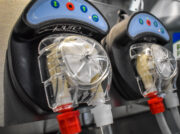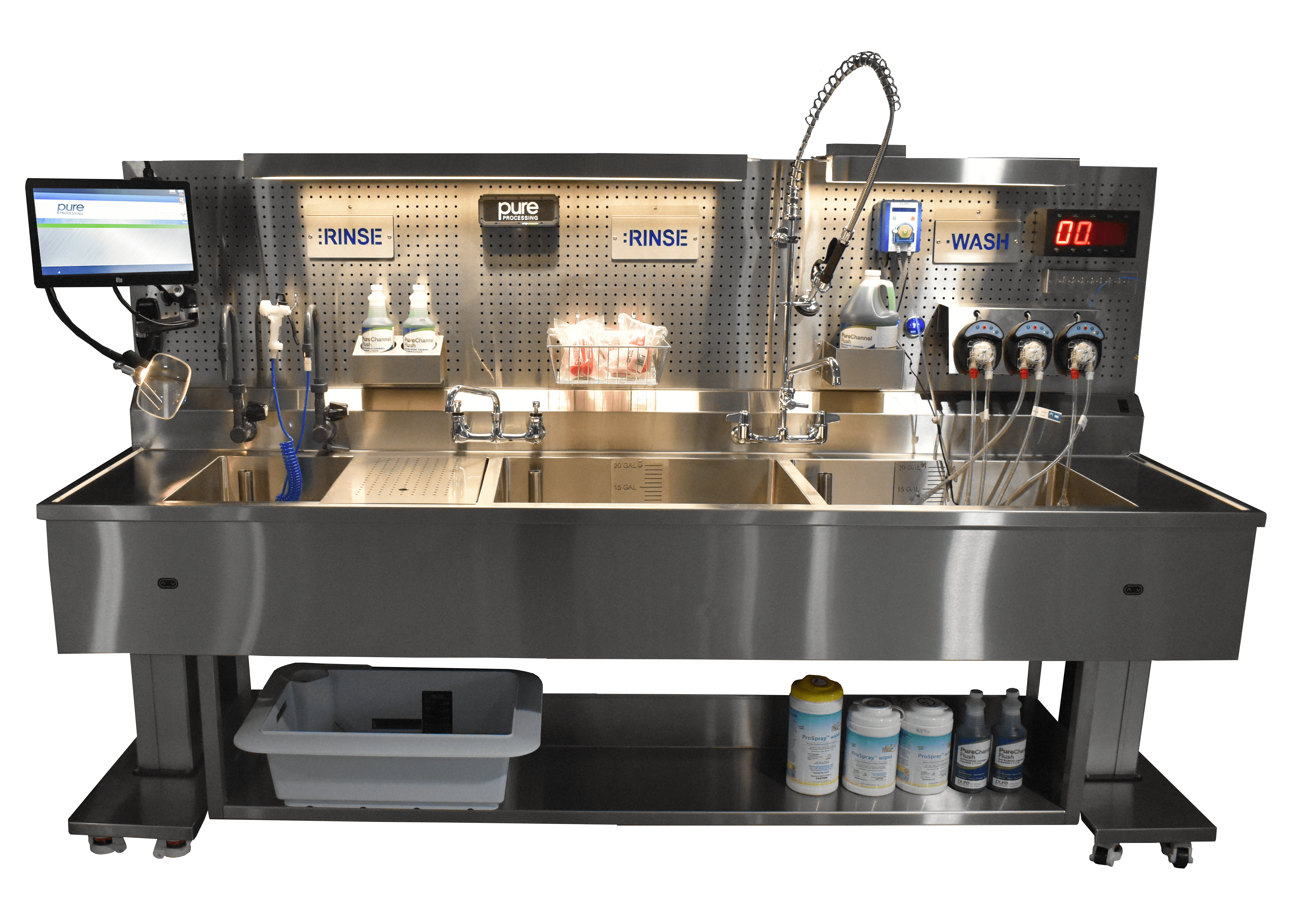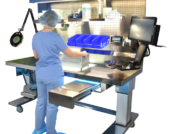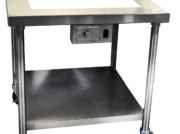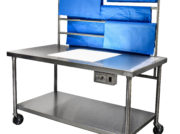
Time and Motion Improvements through Assembly Table Designs
In the demanding world of sterile processing, time and motion efficiency directly impact on SPD’s ability to serve its patients. Sterile processing technicians play a pivotal role in ensuring throughput but are often hindered by outdated equipment and inefficient workflows. By evaluating some of the reasons technicians lose valuable minutes during packaging, design considerations can be identified and integrated into assembly tables.
There are millions of reasons why technicians lose time during assembly. Here are three common reasons where the prep and pack table may be a culprit for lost time during assembly activities.
Reason 1: Inadequate Storage & Organization
A lack of easily accessible storage can lead to constant disruptions during the assembly and packaging process. Technicians often leave their tables to refill containers with indicators, stickers, tape, and other essential tools, which interrupts their workflow and slows down the entire packaging process.
Design Consideration: To tackle this challenge, consider assembly tables with integrated storage. Backwall pegboards can be especially useful, providing ample organizational space that can be arranged to suit any system. By having everything in one place and within easy reach, technicians can work more efficiently, and reduce their steps across departments.
Vendors that provide pegboards or backwalls should also provide the features to organize these tools. Bins, peel pouch organization, or lighted shelving complete vertical storage solutions.
Reason 2: Wrapping & Streamlining Packaging Materials
With some departments reducing their use of blue wrap, it no longer makes sense to keep wrapping materials at every table. This can waste space and result in overordering supplies. Similarly, bulky heat sealers often occupy excessive table space, while switching between pre-cut and roll packaging requires organized storage for both.
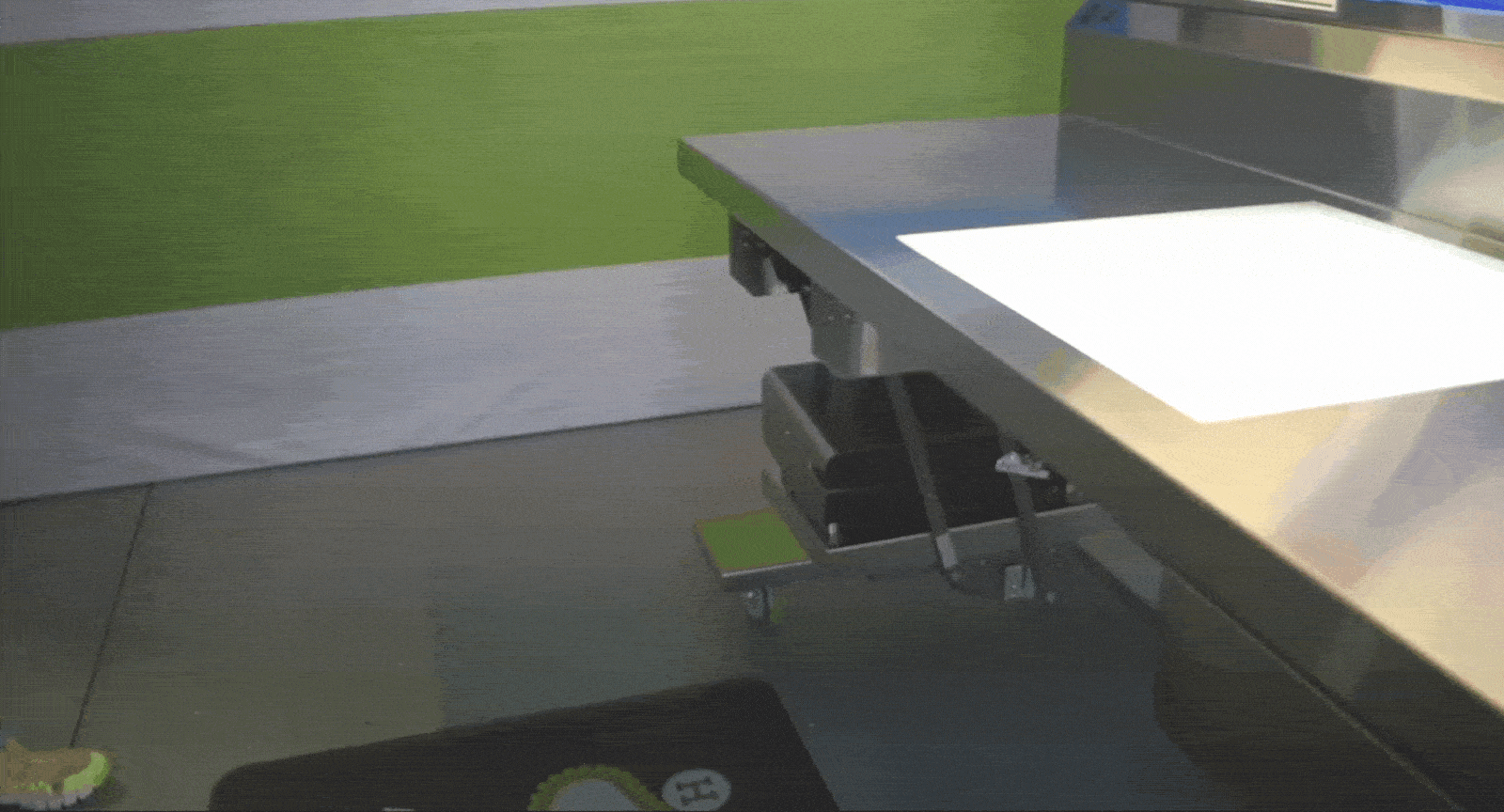
Design Consideration: Departments may choose to re-evaluate their whole workflow, opting to streamline certain packaging processes to specific tables.
A great example are peel pouches. Some table options available are specially built to be peel packing stations and organize those tasks into one location. SMS wrapping stations may also garner time & motion savings when integrating both wrap storage, inspection and wrapping into one convenient location.
When departments don’t have the real estate for a dedicated table, consider design elements that store heat sealers off of countertops, integrate wrap and vertical storage, to free up valuable working space for other assembly tasks. Vertical storage goes for the space used above the table, and below it! Consider the full design capabilities of your vendor.
The same idea can be applied for quality verification processes, such as protein testing, ATP, or borescope inspection. Dedicating physical locations for these activities can give a technician everything they need to do in one location and stay focused on the task at hand.
Reason 3: Weighing Trays
ANSI/AAMI ST77:2013 recommends that the combined weight of trays never exceeds 25 lbs. for sterility assurance and protecting worker safety:
| “The loaned instrumentation policy should include processes to:
e) determine responsibility for ensuring that sets weigh no more than 25 pounds” – ANSI/AAMI ST79 5.2.3.2 Loaned instrumentation policy |
As sterile processing technicians assemble their trays, the need to periodically assess weight might require technicians to leave their table. Carrying around trays to weight stations doubles-down on the strain and fatigue. Minutes are lost catching overweight trays or leaving the assembly table.
Vendor trays are a primary culprit for overweight issues. Before accepting overweight trays, sterile processing technicians need the tools to check the weight. Vendor check-in stations therefore need to be designed with this need in mind.
Design Consideration: Developing assembly tables w/built-in scales to periodically weigh trays can help reduce the amount of time technicians spend leaving and returning to tables. As well, mobile scale carts located at vendor check-in areas help prevent overweight trays from entering workflows and causing overweight issues.
Identify vendors who integrate this concern into their assembly table designs, or those who offer scale solutions. Integrating scales or weight-management technologies can save back aches for staff, and improve sterility outcomes for patients.
Partnering with vendors who understand and address these key factors in prep and pack table designs is essential for achieving time and motion goals. The right table configurations can streamline technician workflows, reducing unnecessary use of time. These designs also support compliance with crucial standards, providing peace of mind for technicians and patients.
Looking to partner with a vendor who can help you save technician time during packaging, and optimize assembly outcomes? Contact us today to learn about the newest in assembly table technologies!
